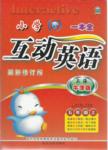题目内容
阅读理解
High inflation (通货膨胀) has knocked out the traditional ways of saving money for college—the 5.5 percent savings accounts (银行账户) and 6.5 percent U. S. savings bonds. (债券) College costs have risen an average of 9.5 percent a year since 1970, according to the college scholarship service. It now costs 3,248 dollars a year to send a child to a four-year public university, counting tuition (学费), room, board, fees, books, transportation and personal expenses and 5,526 for a private college. By 1990, these figures could double.
When savings fall short, as they usually do, almost all families today should make a strong bid for college aid. Some of the better-endowed (捐赠) private colleges offer grants to families with incomes of $ 30,000 or more if they can show financial need. Among the upper-income families that might qualify for help are those with several children; with one child already in college or pre school; with usually large medical expenses or with alimony (赡养费) and child-support obligations (义务). A $ 30,000—income family where both parents work will get more consideration than a family where just one person produces that income.
Colleges vary (变化) enormously in the amount of aid they give to upper-middle-income families, and many applicants (申请) will be disappointed. But you should at least apply. Fill in the financial aid form available at the high-school guidance office, which covers your income, assets[(通常用复数)财产)] and expenses; a computer analysis of how much you should be able to contribute toward college will be sent to whichever colleges you specify.
If a parent is dead, retired or disabled, and was covered by Social Security, his or her unmarried child aged 18 through 21, who is a full-time student, is eligible (合格的) for monthly Social Security benefits. These are granted even if the student is being supported by the other parent.
1.After 1990, the amount of money that would be needed for private collage would be about ________.
[ ]
2.What is the meaning of the word “figure” in paragraph 1?
[ ]
A.Human form.
B.Person, esp. his character or influence.
C.Number.
D.Image in paintings.
3.What kind of upper-middle-income families can not get the financial aid from colleges?
[ ]
A.The family in which there has been one child in the college.
B.The single-parent family.
C.The family with two old people to support.
D.The family with a patient who need a lot of money to cure the disease.
4.Which of the following statement is true according to the passage?
[ ]
A.The applicants can. get the financial aid form from the colleges they specify.
B.Most of the applicants who have got the financial aid form can not get the aid from the college they specify.
C.The student with a retired parent can not get the aid if he is being supported by the other parent.
D.Some of the better-endowed private colleges only give the financial aid to the lower-income families.
5.What is the main idea of the passage?
[ ]
A.High inflation sweeps the United States.
B.The financial ways for college are various in the United States.
C.The families can ask for financial aids from colleges since the costs of college have risen.
D.The costs of college have doubled by 1990.

 互动英语系列答案
互动英语系列答案
| |||||||||||||||||||||||||||||||||||||||||||||||||||||||||||||||||||||||||
| |||||||||||||||||||||||||||||||||||||||||||||||||||||||||||
| |||||||||||||||||||||||||||||||||||||||||||||||||||||||||||